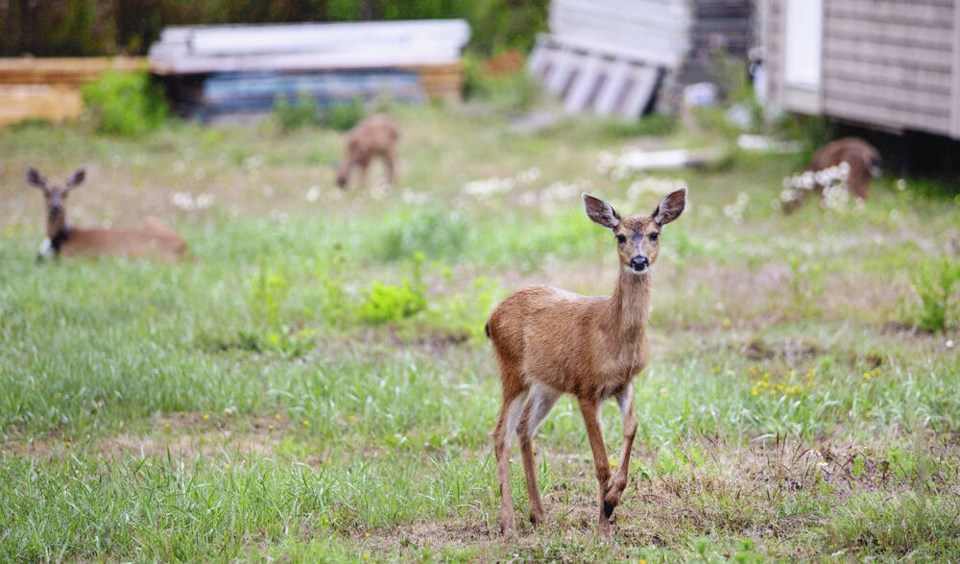Oak Bay residents will soon learn how well the municipality’s birth-control program for deer is working.
Preliminary results are “really positive,” wildlife biologist Alina Fisher said Friday. “It looks like the immuno-contraceptive is having the kind of results we were hoping to see.”
Fisher is part of the research team for the Oak Bay Deer Project, a first-of-its-kind study that is attempting to reduce the number of wild deer in the municipality. Oak Bay, the province and a citizen-led anti-cull group called the Urban Wildlife Stewardship Society have been working on the project to slow the growth of the urban deer population.
Fisher is in the process of writing a report that will be released to Oak Bay council in the next few weeks. After council has reviewed it, the results will be released publicly.
“We’re on the cusp of being able to give the public some real information,” said Fisher. “It looks good, but the actual extent of how good it looks, you’re going to get that information really soon.”
In June, the province granted a permit to Esquimalt to participate in the study, and the municipality is starting its immuno-contraception program this weekend, said Fisher.
The research is being done by the University of Victoria Applied Conservation Macro Ecology Lab, which will use the same methods to inoculate up to 100 female deer.
Both Oak Bay and Esquimalt have consent forms on their website asking property owners to allow the stewardship society onto their properties to locate and inoculate deer. The researchers will go out in the early morning to inoculate deer in Esquimalt, and inoculate deer in Oak Bay in the evenings, said Fisher.
In September 2019, 60 does were inoculated with an immuno-contraceptive by Dr. Adam Hering and a group of volunteers. The does were darted with a sedative before a primer dose of the vaccine was injected by hand. Two to six weeks later, the deer were given a booster. The project also included a control group of 20 does that were given collars but not vaccinated.
“Some of [the inoculated] deer did have fawns, but it’s a fairly small number compared to those that were not vaccinated,” said Fisher.
In 2020, the 60 does were given booster shots. Other sexually mature does — fawns from the previous year or deer that crossed the border from other municipalities — were also vaccinated. Fawn suppression started to take place in that second year, said Fisher.
The stewardship society is administering boosters to previously treated female deer across Oak Bay this fall. Once a marked deer is located, the wildlife veterinarian will administer the booster by dart.
Other municipalities in Greater Victoria would like to take part in the program, but funding is limited, said Fisher.
“And the province isn’t necessarily going to approve the vaccine for use in the larger context until we are able to provide evidence that it actually is a good management tool and effective.”
Fisher said she was disappointed by the theft of nine of 39 motion-sensor cameras installed along trails in Oak Bay to photograph wandering deer. The cameras were never found and had to be replaced at a cost of $3,000.
The theft left a month-long gap in the data, she said. “But we did replace them pretty quickly.”



